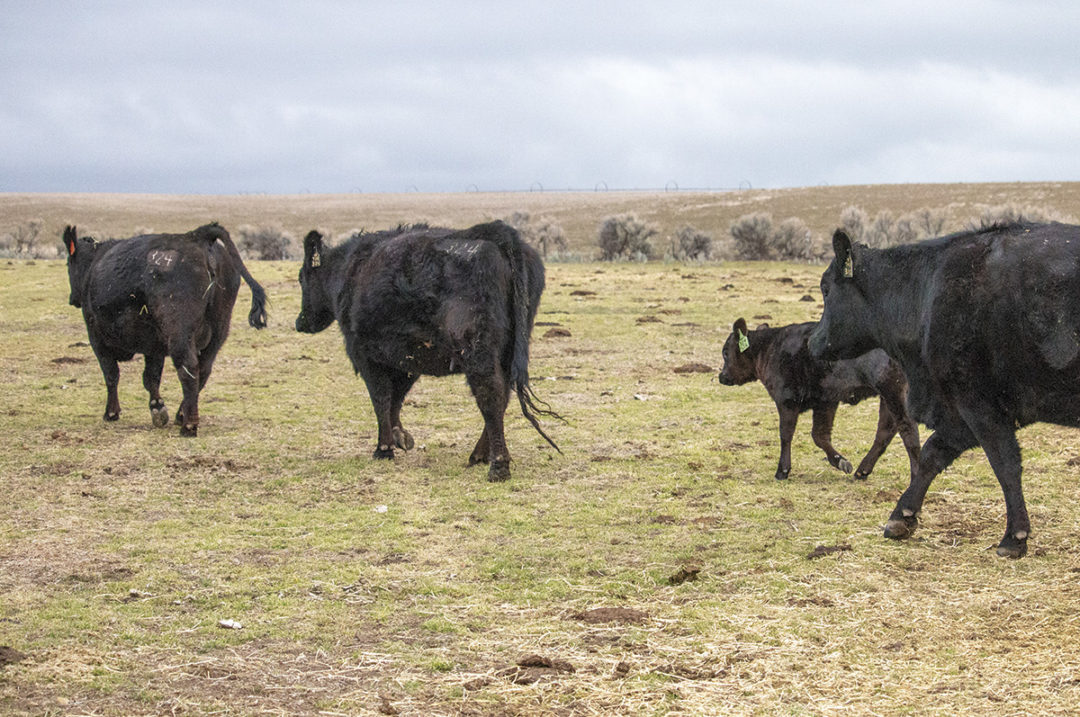“The low pregnancy rate issue in beef cows this fall seems to be pretty pervasive but also varies from herd to herd,” says John Hall, University of Idaho professor and beef extension specialist. “Through visits with veterinarians and ranchers, it appears most herds have 3 to 10 percent more open cows. There have been a few wrecks, but other ranches report little difference from previous years. Most of the impact appears to be in later-calving herds or herds in parts of the region where temperatures were the highest. The impact also appears to be worse in younger cows – 2-year-old and 3-year-old cows.”
“The cause for decreased pregnancy rates is probably the result of three factors: early embryonic mortality, reduced semen quality and nutritional challenges. Any one of these factors can reduce pregnancy rates; however, the effect is greater if two or three are involved. Heat stress can impair oocyte [egg] development and reduce fertilization rate. High ambient temperatures during day one to 28 of pregnancy can result in early embryonic mortality. Basically, heat stress results in changes in enzyme systems or hormone levels that damage the embryo or interfere with the normal cascade of events needed for maternal recognition of pregnancy and normal embryo/placental growth,” Hall says.
“The bull’s testes must remain at a temperature lower than his body temperature for proper sperm development and maturation. Reduced fertility in bulls usually occurs about two weeks after the heat stress, and it may take six to 12 weeks for them to recover,” Hall says. “It is not unusual in normal-temperature years for bulls to be less fertile in July and August than they are in May and June.”
“Certainly, the extremely dry spring followed by high temperatures and drought early in the summer did not help the nutritional situation this year,” Hall says, who is also the cattle management lead for Rinker Rock Creek Ranch, a 10,400-acre living laboratory where science-based practices for land managers are developed. “Limited greenup with early senescence of many of the range grasses and forbs meant the nutritional quality of the range decreased earlier than normal. Research has demonstrated that cows losing weight and body condition between calving and breeding or early in the breeding season have reduced pregnancy rates. Since young cows are still growing, they have greater energy and protein needs than mature cows. This makes these young cows at greatest risk for reduced pregnancy rates as a result of poor range conditions.”
“Any time there is a significant reduction in cow pregnancy rates, it has both short-term and long-term consequences for ranch families. The short-term effect will be fewer calves to sell in the fall of 2022, which decreases ranch income. Early this fall, cull cow prices were fairly strong, but they have weakened considerably recently. So the increased number of cull cows to sell this fall [2021] won’t necessarily offset the reduced income next fall, and selling more cows this fall has cash flow and tax implications. An upside [if there is one] of reduced pregnancy rates is fewer cows to feed during a winter when hay supplies are short. But that may be little solace if a ranch loses younger cows. Alternatively, ranchers may be forced to keep less-productive cows that happen to be pregnant just to keep cow numbers up. The long-term impact of reduced pregnancy rates may be fewer young cows in the herd and reduced herd size. If ranches want to rebuild their herds next year, then they will either have to buy bred heifers or retain more heifers for replacements in 2022. Either option results in financial strain on the operation,” Hall says.
“After consulting with a few vets around the Magic Valley, I found that producers who breed early and use A.I. before going out onto the range/pasture had great pregnancy rates,” says Ashlee Westerhold, University of Idaho extension area economist. “Those who did not breed early found about a 25 percent reduction in pregnancies, or 25 percent more open cows. Low pregnancy rates alter producers’ bottom lines for years to come. If they sold those open cows, they were selling them as cull cows. Especially this summer, there was not enough feed to keep open cows. The difference between selling those open cows and those calves will be minimal, since they will receive similar pricing based on market prices and sizes. However, selling those open cows now reduces the opportunity to grow the herd. Producers might have saved money this year not paying for feed for open cows, but now will have to build back the herd in a possibly tight supply market. It might have been the right marketing decision at the time, but how does it affect the long-term goals of that operation? Next year, there will be significantly less calf crop in that herd from all the sold cows. But again, this might have been an overall fine strategy with the current state of feed costs and no sign of the costs becoming lower anytime soon.”






